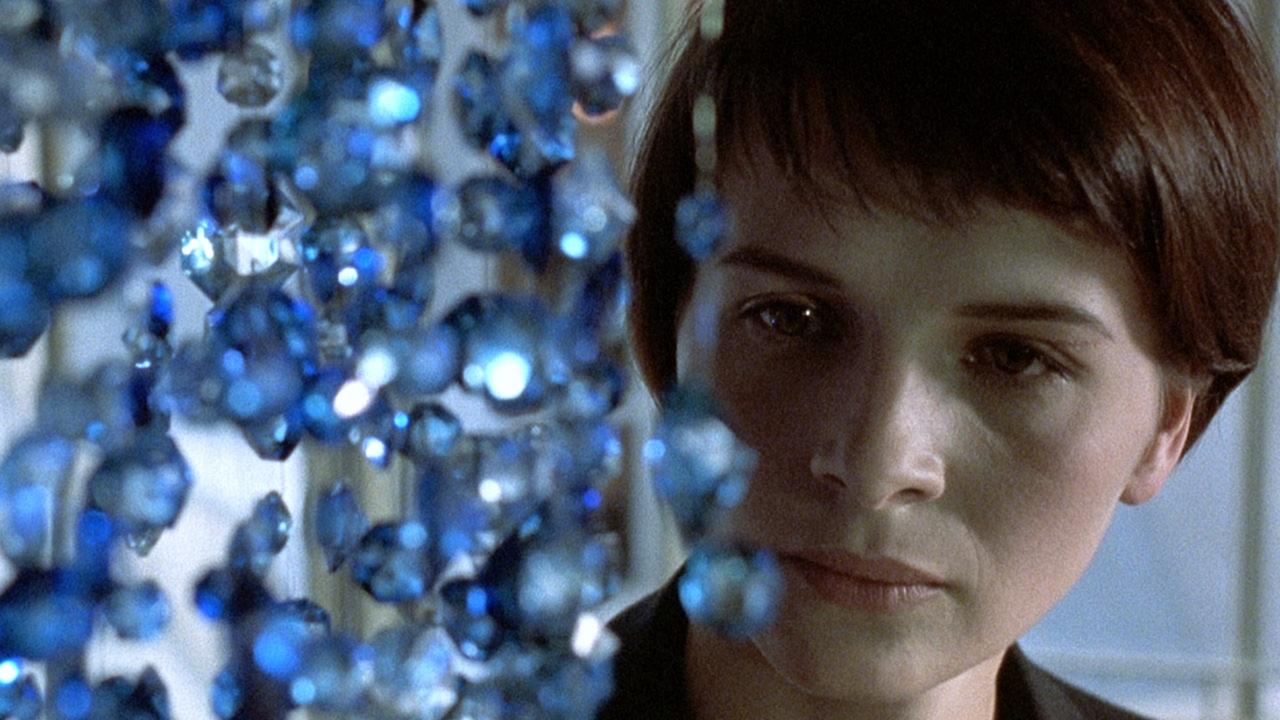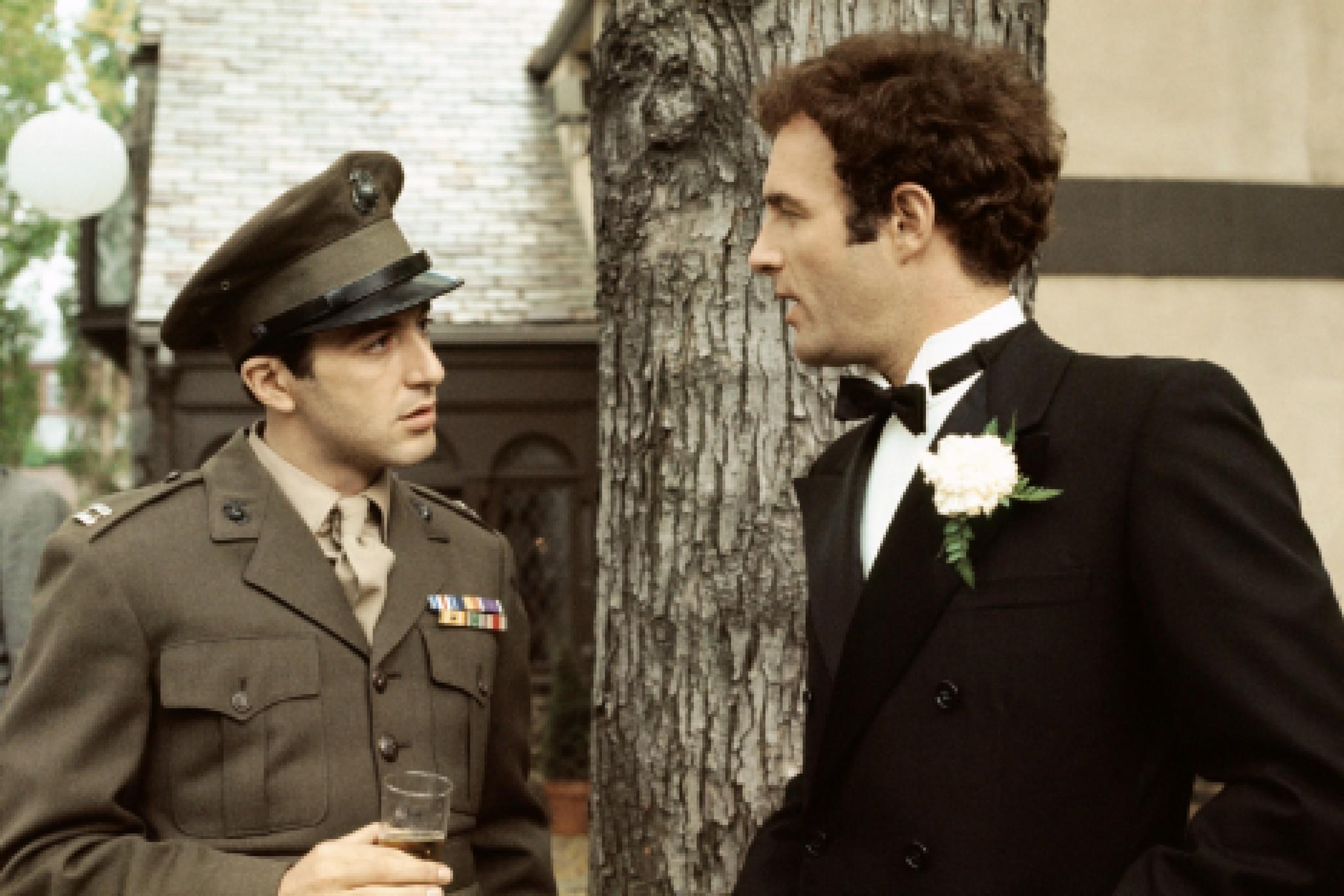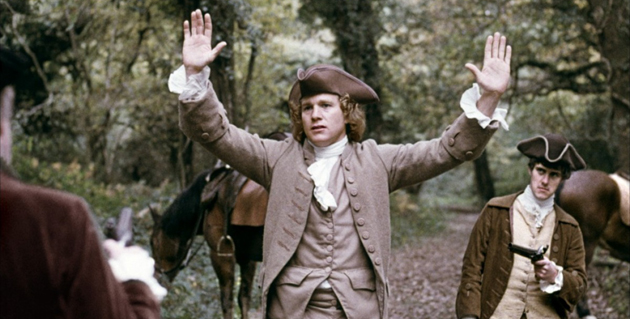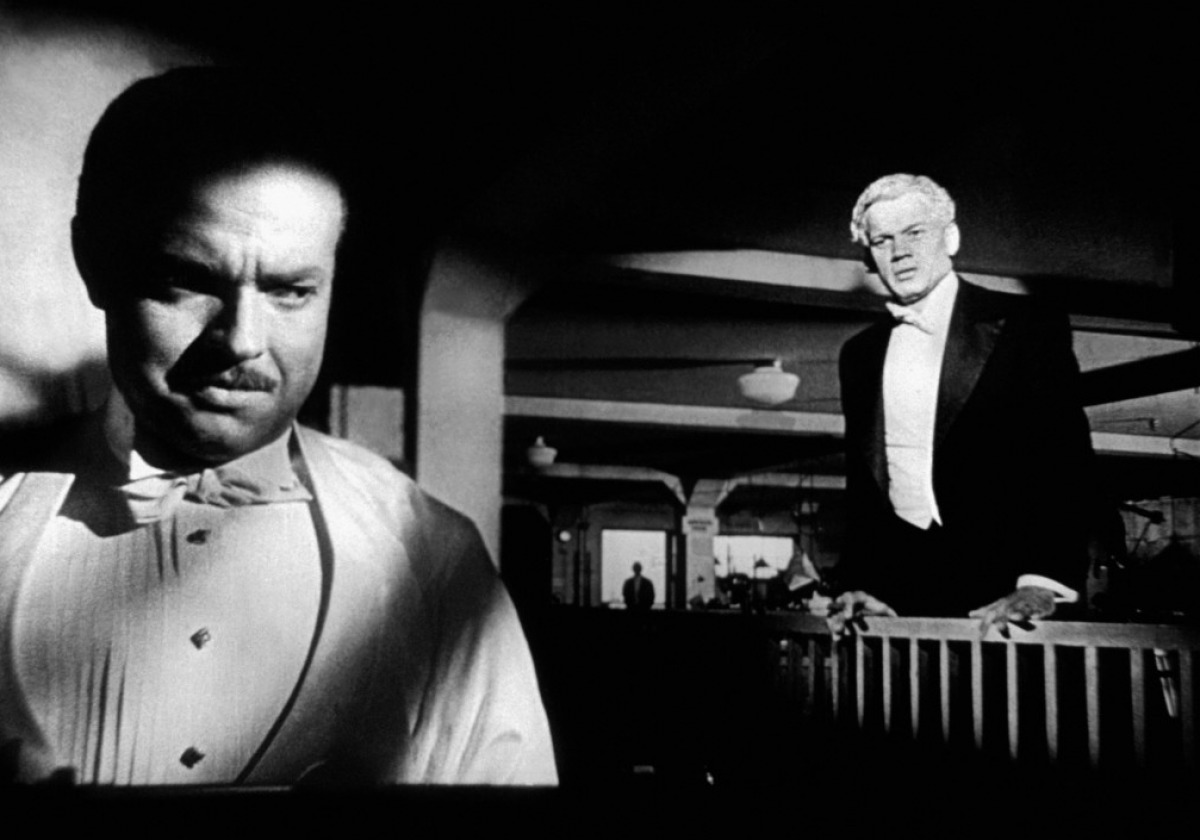5. Julie Vignon de Courcy in Three Colors: Blue

Long time collaborators Krzysztof Piesiewicz and Krzysztof Kieslowski were masters of character development and film form. Together they wrote (and Kieslowski directed) the “Color Trilogy,” a set of three films inspired by the three colors of the French flag. “Blue” (1993) is second film in the trilogy and it has a lot to do with the meaning of blue in the French flag – freedom.
The film presents Juliette Binoche as Julie Vignon de Courcy, a woman who lost her son and husband (a former musical composer) in a car accident. Julie deals the pain of their loss as she tries to flee from the past that the house where she lives with her family embodies. But the past follows her wherever she goes. Kieslowski expresses this presence in varying complex and powerful ways, through music and color.
As the film develops, Julie starts to change her relationship with the past (as the relationships with colors and music change). It is hinted that she may be the author of her former husband’s work. As the film ends, we see Julie free herself from the pain of the past, seeing a character profoundly different from the one which we first saw.
4. Michael Corleone in The Godfather

Francis Ford Coppola’s great commercial success displays Marlon Brando as Vito Corleone and Al Pacino as his son Michael Corleone. “The Godfather” (1972), directed by Coppola and based on the novel by Mario Puzo, who collaborated with Coppola to make the screenplay adaptation, presents us a Sicilian gangster family shaped ruled by Vito Corleone, whom everyone shall call “Godfather.” Don Vito maintains a sinister order criminal scene in New York, where everyone owes him allegiance and he’s almost “all powerful.”
Michael Corleone is presented as an outsider to his own family; he is the only brother who does not take part in the criminal dynamics of the Corleone family. He studied law and is the one to break with the dark dynamics of his family, thus everyone knows that he is not the one to act in critical circumstances.
But suddenly the Corleone family is threatened by an external force. Don Corleone is not able to fight back and the order needs to be restored. Without Vito, the other gangsters do not know whom to trust and suddenly Michael decides to take a stand. He gradually crosses thresholds as he becomes what no one wanted him to become – his father. Michael Corleone restores the order of the family, and we witness his corruption as he becomes the Godfather.
3. Dr. Isak Borg in Wild Strawberries

Written by legendary filmmaker Ingmar Bergman while being hospitalized after the making of “The Seventh Seal,” “Wild Strawberries” is one of Bergman’s most optimistic films. It stars veteran actor and director Victor Sjöström as Doctor Isak Borg, an old and bitter professor who has to go to Lund’s University to receive recognition for his career. After having a strange dream, Dr. Isak decides to make the trip to Lund University by car instead of plane.
Marianne (Ingrid Thulin), the wife of his son Evald (Gunnar Björnstrand), decides go with him. During the journey, a young woman named Sara, (Bibi Anderson) joins them, with two young man whom they eventually leave behind. Both women confront Dr. Isak on his bitter character and his relationships with other people.
As the road trip goes on, Dr. Isak remembers certain episodes of his life, and at the same time he talks with the young people about life, time and the human condition. The interaction through the journey gives Dr. Isak insight into his life as a natural kindness take the place of his bitterness. The characteristic pessimism of Bergman makes the transformation of Dr. Isak extremely valuable, and when we see him arrive to Lund University he seems genuinely grateful for the life he has lived.
2. Barry Lyndon in Barry Lyndon

Based on the novel by William Makepeace Thackeray written in 1844 called “The Luck of Barry Lyndon,” the film was simply called “Barry Lyndon” in 1975 by the filmmaker in charge of its adaptation and direction – the great Stanley Kubrick. The film displays a character who stars as an idealistic young man called Redmond Barry (Ryan O’Neal) who gradually becomes Barry Lyndon, an old devious and disenchanted man.
The movie stars with what is going to become the musical motif of the film: “Sarabande” by Georg Friedrich Haendel. The theme is presented along with the infatuated Redmond Barry and his seductive cousin. Redmond is framed as a tragic lover whose strong character and stubborn love for his cousin bring him troubles that lead him to escape from his hometown.
As Redmond Barry leaves his hometown and travels the world, he starts receiving setbacks and hardships. We see how his passion gradually fades and his character becomes one of a very sophisticated crock. We see him marry a woman he doesn’t love, turning definitely into Barry Lyndon while hearing “Sarabande” again, thus remembering the young romantic man he once was, in contrast to the fall-destined shadow he has become. Maybe “Barry Lyndon” is the portrait not of a single man, but of the romantic spirit that turns into a shadow as the world reveals to him its cruel nature.
1. Charles Foster Kane in Citizen Kane

“Citizen Kane” (1941) was directed by the visionary Orson Welles, who wrote the script with almost absolute creative freedom (this was the condition he give the studios to make a film) in collaboration with Herman J. Mickiewicz, John Houseman, Roger Q. Denny and Mollie Kent. Together they would create one of the most iconic characters in film history for one of the most iconic films.
Welles also played the lead role in the film and impersonated Kane, whom we see develop from childhood to his death (with which the film starts). The intention is to understand what drove a man as eccentric as Charles Foster Kane to be the way he was, and an inquiry is started.
Through the film, we see fragments of Kane and how he turns from an innocent kid to and idealistic entrepreneur, to an ambitious tycoon who runs for president and builds a beyond imagination manor called Xanadu.
What makes Kane so interesting is his self-destructive character that makes him act as though he is always looking for something which he lost. His last and iconic word “Rosebud” is related to the traits of Kane and is what drives the inquiry to understand Charles Foster Kane.